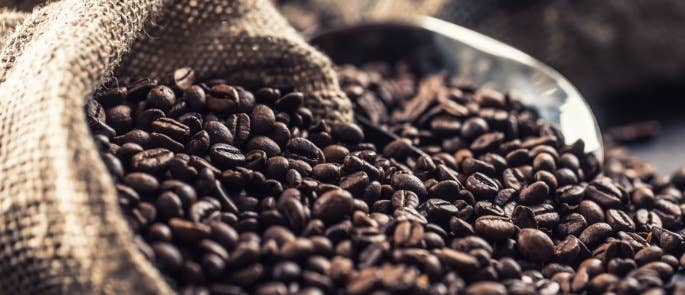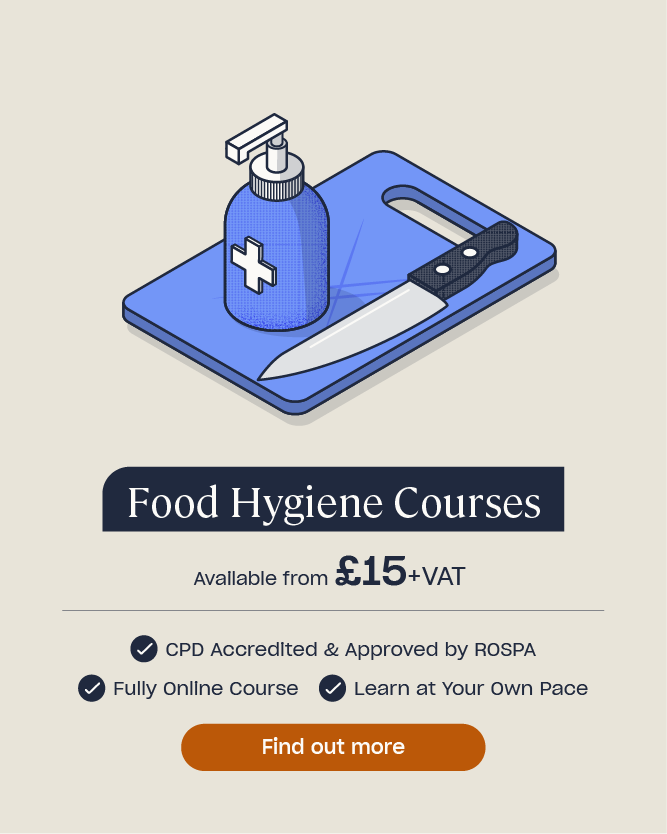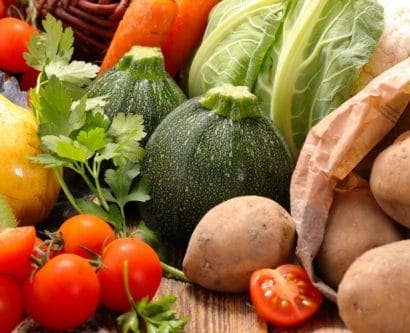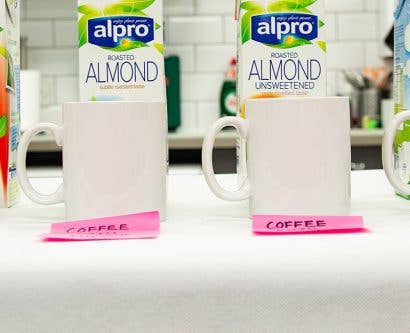A Short Guide to Acrylamide in Food
Acrylamide is primarily used in industrial processes, including in the production of dyes, paper, textiles and toiletries. But did you know that it can also be found in many of the foods we eat? The European Food Safety Authority (EFSA) consider acrylamide a potential carcinogen, meaning consumption may increase the likelihood of cancer.
Scientific evidence determining this link in humans is not conclusive. However, whether you are preparing food at home in the kitchen, or are responsible for the handling and cooking of food as part of your job, you must be aware of the risks. This guide will help you to understand what acrylamide is, how much is safe, and how you can limit it.
What is Acrylamide?
Acrylamide is a by-product naturally formed when you cook starchy, carbohydrate-rich foods with low moisture at temperatures of 120 °C and above. The chemical substance is formed during the Maillard Reaction, which takes place when the sugars and amino acids in the food are heated. Most foods that produce acrylamide, such as potatoes, need to be cooked at temperatures above this threshold. Therefore, it is almost inevitable that you are eating foods that contain acrylamide.
High levels of acrylamide have been proven to cause cancer in animals, and scientists agree that it has the potential to be a carcinogen for humans as well. Although evidence of this direct causation is limited, the NHS recommend that we reduce the amount of acrylamide in our diets as a precaution.

Acrylamide in Food
Produced naturally, acrylamide can form when you cook foods in one of the following ways:
- Frying
- Roasting
- Baking
- Grilling
- Toasting
One way of reducing the amount of acrylamide is to change the cooking process. The Food Standards Agency (FSA) recommend that you should boil, steam or microwave foods that are high in carbohydrate. This reduces the quantity of acrylamide that is produced to a level safer for our consumption.
Need a Course?
Our Food Hygiene Training is designed to ensure a comprehensive knowledge of all food safety and hygiene procedures.
Foods to Limit
Acrylamide foods to avoid or cook with caution include:
- Chips – choose wedges over French fries. If making your own chips, cut them thicker to reduce the amount of acrylamide. You should also eat sweet potato fried in moderation, and make sure you cook them carefully.
- Crisps – as this form of potato is thinly sliced and fried, acrylamide levels can be high.
- Bread – toasted bread should be golden brown in colour, rather than burnt.
- Roasted potatoes and root vegetables – you should store raw potatoes at room temperature and in the dark. If stored below 8 °C, the sugar levels in potatoes increase, resulting in higher acrylamide levels after cooking. This process is known as ‘cold sweetening’.
- Coffee – acrylamide is produced when coffee beans are roasted.
- Breakfast cereals – cornflakes and all-bran flakes are the worst offenders, while porridge oats contain no acrylamide at all.
- Biscuits and crackers – if baking at home, follow recipes that cook at a relatively low temperature. Also make the finished product as light in colour as possible (without it being raw!).
Of course, it is not feasible to remove acrylamide from our diets entirely. But you do need to be aware of the foods and cooking processes that increase the potentially carcinogenic substance. Knowing this, you can make sure you don’t overcook starchy foods by considering the duration, temperature and colour of foods.

Acrylamide in Coffee
When coffee beans are roasted, acrylamide is formed. The amount produced varies, with well-roasted, darker coffee beans in fact likely to have the lowest quantity of acrylamide.
A 2013 study into acrylamide levels in coffee found that instant coffee had 100% more acrylamide than freshly roasted coffee. Researchers found that coffee substitutes (‘grain coffee’), such as chicory coffee, had up to 300% more. The research concluded that acrylamide levels peak early on in the roasting process, and then decline. This explains why lighter-coloured coffee beans have higher levels of acrylamide than ones that are darker and roasted for longer. Interestingly, no significant difference was found in acrylamide content amongst different types of coffee bean.
This doesn’t mean you should stop drinking coffee completely. In fact, coffee has many health benefits. It is high in antioxidants, which prevent cells in the body from being oxidised by toxins, chemicals and inflammation. Some studies have even suggested that, rather than cause cancer, coffee may in fact reduce the risk of some forms.
How Much Acrylamide is Safe?
As mentioned, conclusive, scientific research into the risks to human health from acrylamide is limited. However, animal studies, in which a high acrylamide diet was administered, suggested an increase in the likelihood of gene mutations and tumours developing. Studies have also shown that rats and mice developed cancer when acrylamide was put in their drinking water. Therefore, it would appear that, in large quantities, acrylamide is carcinogenic to some animals.
It is unlikely that we will consume the same quantity of acrylamide as the test subjects. In fact, the dosage of the chemical in some of these studies was a massive 10,000 times what humans get from their diet.
In terms of how much acrylamide is safe, the EFSA concluded that they can’t recommend a tolerable daily intake (TDI) of acrylamide in food. This is because acrylamide is a genotoxic substance and exposure to it can potentially cause cancer. Rather, the EFSA have determined an estimated dosage range within which the substance is likely to cause potential health effects. A value of 10,000 or more indicates a low risk to public health, while a low number indicates a much higher potential risk. Acrylamide has been estimated to range from 425 for an adult to 50 for toddlers. This range is significantly lower than the 10,000 benchmark and should therefore be a cause for concern.
Acrylamide and Pregnancy
Recent studies have suggested a link between high levels of acrylamide consumed during pregnancy and underweight newborns. This trend was found when levels of acrylamide in the umbilical cord blood of babies at birth were measured. One study found that, on average, babies in the highest quarter of acrylamide levels were 132 g lighter than those in the lowest quarter. During this study, mothers who consumed foods considered higher in acrylamide were more likely to have underweight babies.
However, this research does not prove that foods containing acrylamide are responsible for stunted growth in babies. It does not take into consideration other potential factors, such as behaviours or other eating habits when pregnant that are scientifically proven to cause health complications in babies. The effects of acrylamide consumption on humans is still being investigated and so the risk of underweight babies as a direct consequence cannot yet be ascertained.
While the FSA do warn about the potential risk of acrylamide-heavy diets, they don’t advise people to stop eating foods that could have a high quantity. Instead, they recommend people, including those who are pregnant, eat a healthy, balanced diet.

The presence of acrylamide in food, even at a minimal level, is inevitable. While the health risks associated with its consumption remains largely uncertain, scientists warn that the potential to cause cancer means we should reduce the amount we consume as a precaution. To manage this risk, you should limit the amount of cooked, starchy foods you eat and how ‘well-cooked’ they are.
What to Read Next:
- What are High Risk Foods and How Can I Use Them Safely?
- How to Prevent E. coli
- Online Food Hygiene Training Courses











